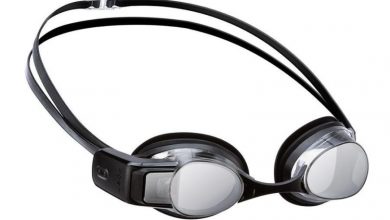Debunking Myths About Walking Shoes Beginner’s Guide

Debunking Myths About Walking Shoes: A Beginner’s Guide
Introduction
Walking is a fantastic exercise that can help improve your cardiovascular health, boost your mood, and strengthen your muscles. To make the most of your walking routine, it’s crucial to invest in a good pair of walking shoes. However, with so many myths surrounding walking shoes, it can be challenging for beginners to know what to believe. In this guide, we will debunk some common myths and provide valuable information to help you find the perfect walking shoes.
Myth 1: Sneakers and Running Shoes are Just as Good for Walking
Contrary to popular belief, sneakers and running shoes are not ideal for regular walking. While they may provide some support and cushioning, they lack the specific features that walking shoes offer. Walking shoes are designed with flexibility, stability, and motion control to enhance your walking experience and prevent common foot problems. Therefore, it’s important to choose shoes that are specifically designed for walking.
Myth 1 Answer:
Walking shoes differ from sneakers and running shoes in multiple ways. They have a more rounded heel and a flexible sole to promote smoother movement. Additionally, walking shoes provide extra support around the arch and midfoot regions, essential for maintaining proper alignment during the walking motion.
Myth 2: Expensive Walking Shoes Are Always Better
Price is not always an indicator of quality when it comes to walking shoes. While some high-end brands might offer advanced features and superior materials, it doesn’t mean they are automatically the best option for everyone. Finding the right walking shoes is a highly individual process that depends on factors such as foot shape, walking style, and personal preferences. Therefore, it’s essential to focus on finding shoes that provide the right fit, support, and comfort, regardless of their price tag.
Myth 2 Answer:
Finding the best walking shoes involves considering various factors, including comfort, fit, arch support, and cushioning. It’s important to prioritize your individual needs rather than solely relying on the price. Explore different brands, try on different shoe models, and select the pair that feels the most comfortable and supportive for your feet.
Myth 3: Walking Shoes Don’t Require Break-in Time
While walking shoes are generally more comfortable out of the box compared to other types of footwear, they may still require some break-in time. Different shoes have different materials and constructions, and it’s essential to give your feet time to adapt to the new pair. Wear your new walking shoes for shorter walks initially, gradually increasing the duration to allow your feet to adjust. This will help prevent blisters and discomfort in the long run.
Myth 3 Answer:
Breaking in your walking shoes is crucial to avoid potential discomfort and blisters. Start by wearing them for shorter periods, gradually increasing the duration of use. This allows your feet to become accustomed to the shoes’ specific structure and materials and ensures a more comfortable walking experience over time.
FAQs about Walking Shoes
Q: How often should I replace my walking shoes?
It’s generally recommended to replace walking shoes every 300-500 miles or approximately every 6-12 months, depending on your walking frequency and the shoe’s condition. Over time, the cushioning and support in the shoes may deteriorate, leading to reduced comfort and increased risk of injuries.
Q: Can I use athletic shoes for walking?
While athletic shoes might provide some level of support, investing in a proper pair of walking shoes is advisable. Walking shoes are specifically designed to accommodate the unique needs of walkers, such as proper flexion and arch support. This helps prevent foot fatigue, discomfort, and injuries that may arise from walking in shoes not designed for this activity.
Q: Can walking shoes help with foot pain?
Yes, walking shoes can help alleviate foot pain. They provide proper arch support, cushioning, and stability, all of which are vital for reducing foot pain. If you experience persistent foot pain, it’s also a good idea to consult with a podiatrist to help identify the underlying cause and receive appropriate treatment.
Conclusion
Don’t let common myths about walking shoes misguide you. Investing in a good pair of walking shoes is crucial to maximize your walking routine and prevent potential foot problems. Remember to prioritize comfort, support, and fit when selecting your walking shoes, regardless of the price tag. By debunking these myths, we hope to guide you towards making informed decisions and ultimately finding the perfect pair of walking shoes for your needs. Happy walking!



